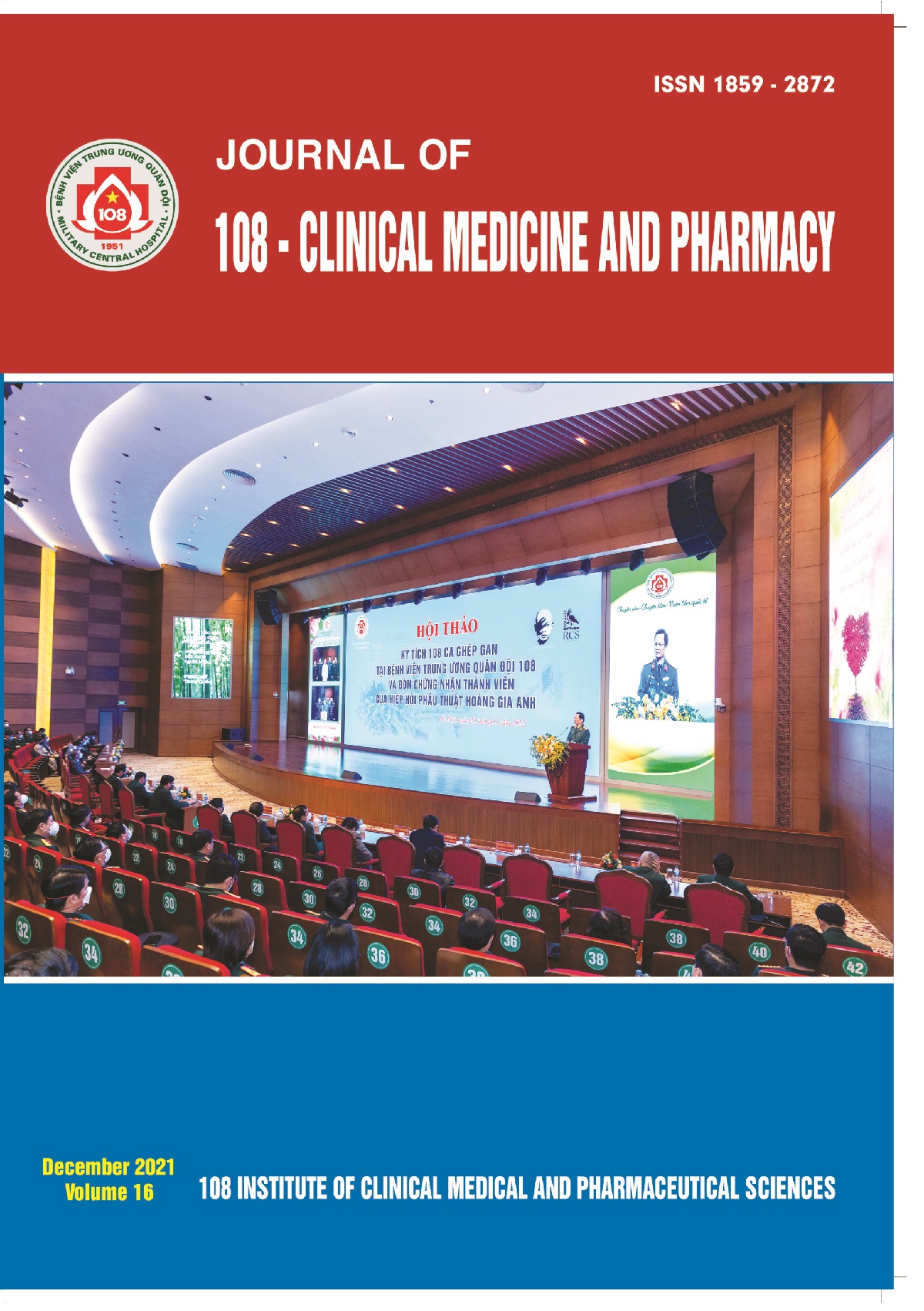The dual toning technique of 1064nm Nd:YAG picosecond and quasi-long pulsed laser combined with D-pigment cream in treatment of melasma
Main Article Content
Keywords
Tóm tắt
Objective: To evaluate the efficacy and safety of the dual toning laser of Nd:YAG 1064nm picosecond and quasi-long pulsed laser combined with D-pigment night cream in treatment of severe melasma. Subject and method: Twenty four Vietnamese females, mean age of 44.46 ± 8.04 years, Fitzpatrick skin type IV with the clinical diagnosis of dermal and mixed-type melasma were treated with 5 combination sessions of picosecond laser Nd:YAG 1064nm (Picoplus) with a spot size of 8mm, the energy of 0.65 - 0.8J/cm2 and quasi-long pulsed mode laser (Clarity) with the duration of 0.35ms, the spot size of 15mm, the energy of 2.6J/cm2, ICD (Intelligent Cool Device) off. Mild and transient erythema was the endpoint. Laser treatments were given every 4 weeks. All patients were applied with UVA/B sunscreen, SPF of at least 30 in daytime and D-pigment cream at night. Improvement was rated by mMASI at the baseline (first -T1) and after 5 sessions (sixth -T6). Result: The mean mMASI score of 24 patients at T1 was 11.10 ± 3.59 (min 6.0; max 22.4); after one month of 5th session, the mean mMASI score at T6 was reduced to 5.43 ± 2.18 (min 1.8 - max 11.0) (mMASI score reduced by a mean of 5.68 ± 2.36), achieving 51.06 ± 13.17% reduction. There were no unexpected side effects in any patients. Conclusion: Dual toning technique using 1064nm Nd:YAG picosecond and quasi-long pulsed laser combined with D-pigment cream at night was safe, effective and well-tolerated in treatment of patients with melasma. Further larger studies should be carried out with control to confirm the advantage of the method.
Article Details
Các tài liệu tham khảo
2. Goldberg D, Metzler C (1999) Skin resurfacing utilizing a low-fluence Nd:YAG laser. J Cutan Laser Ther 1(1): 23-27.
3. Kim JE, Chang SE, Yeo UC et al (2013) Histopathological study of the treatment of melasma lesions using a low-fluence Q-switched 1064-nm neodymium:yttrium-aluminium-garnet laser. Clin Exp Dermatol 38(2): 167-171.
4. Mun JY, Jeong SY, Kim JH et al (2011) A low fluence Q-switched Nd:YAG laser modifies the 3D structure of melanocyte and ultrastructure of melanosome by subcellular-selective photothermolysis. J Electron Microsc (Tokyo) 60(1): 11-18.
5. Park YW, Yeo UC (2015) Mottled hypopigmentation from laser toning in the treatment of melasma: A catastrophic or manageable complication?. Med Lasers 4: 45-50.
6. Choi CP, Yim SM, Seo SH et al (2015) Retrospective analysis of melasma treatment using a dual mode of low-fluence Q-switched and long-pulse Nd:YAG laser vs. low-fluence Q-switched Nd:YAG laser monotherapy. Journal of Cosmetic and Laser Therapy 17(1): 2-8.
7. Choi YJ, Nam JH (2017) Efficacy and safety of a novel picosecond laser using combination of 1 064 and 595nm on patients with melasma: A prospective, randomized, multicenter, split-face, 2% hydroquinone cream-controlled clinical trial. Lasers Surg Med 49(10): 899-907.
8. Wang YJ, Lin ET, Chen YT et al (2020) Prospective randomized controlled trial comparing treatment efficacy and tolerance of picosecond alexandrite laser with a diffractive lens array and triple combination cream in female asian patients with melasma. J Eur Acad Dermatol Venereol 34(3): 624-632.
9. Chalermchai T, Rummaneethorn P (2018) Effects of a fractional picosecond 1,064 nm laser for the treatment of dermal and mixed type melasma. J Cosmet Laser Ther 20(3): 134-139.
10. Kang Hy, Kim Jh, Goo Bc (2011) The dual toning technique for melasma treatment with the 1064 nm Nd: YAG laser: A preliminary study. Laser therapy 20(3): 189-194.
11. Choi JE, Lee DW, Seo SH et al (2018) Low-fluence Q-switched nd:YAG laser for the treatment of melasma in Asian patients. J Cosmet Dermatol 17(1053-1058).
12. Gokalp H, Akkaya AD, Oram Y (2016) Long-term results in low-fluence 1064-nm Q-Switched Nd:YAG laser for melasma: Is it effective? J Cosmet Dermatol 15(4): 420-426.
13. Dayan SH, Vartanian AJ, Menaker G et al (2003) Nonablative laser resurfacing using the long-pulse (1064-nm) Nd:YAG laser. Arch Facial Plast Surg 5(4): 310-315.
 ISSN: 1859 - 2872
ISSN: 1859 - 2872
